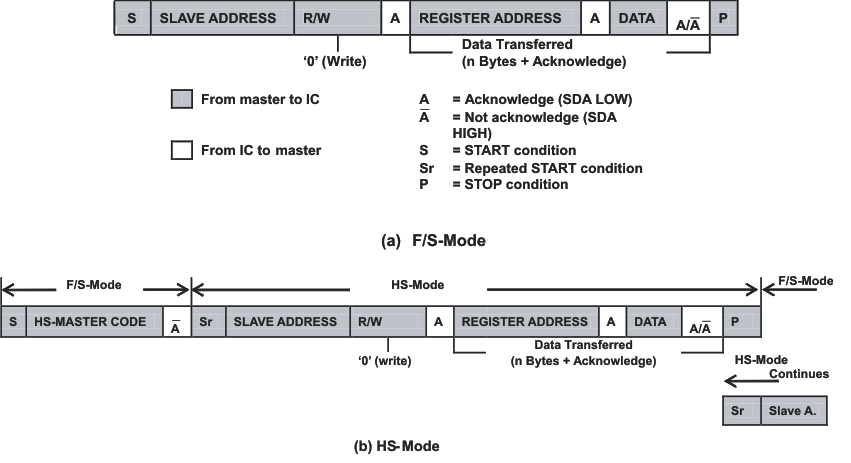JAJSEC4E September 2012 – January 2018
PRODUCTION DATA.
- 1 特長
- 2 アプリケーション
- 3 概要
- 4 改訂履歴
- 5 概要(続き)
- 6 Device Comparisons
- 7 Pin Configuration and Functions
- 8 Specifications
-
9 Detailed Description
- 9.1 Overview
- 9.2 Functional Block Diagrams
- 9.3 Operational Flow Chart
- 9.4 Feature Description
- 9.5 Device Functional Modes
- 9.6 Programming
- 9.7 Register Description
- 10Application and Implementation
- 11Power Supply Recommendations
- 12Layout
- 13デバイスおよびドキュメントのサポート
- 14メカニカル、パッケージ、および注文情報
9.6.1.3 I2C Update Sequence
The IC requires a start condition, a valid I2C address, a register address byte, and a data byte for a single update. After the receipt of each byte, the IC acknowledges by pulling the SDA line low during the high period of a single clock pulse. A valid I2C address selects the IC. The IC performs an update on the falling edge of the acknowledge signal that follows the LSB byte.
For the first update, the IC requires a start condition, a valid I2C address, a register address byte, a data byte. For all consecutive updates, The IC needs a register address byte, and a data byte. Once a stop condition is received, the IC releases the I2C bus, and awaits a new start conditions.
 Figure 22. Data Transfer Format in F/S Mode and H/S Mode
Figure 22. Data Transfer Format in F/S Mode and H/S Mode